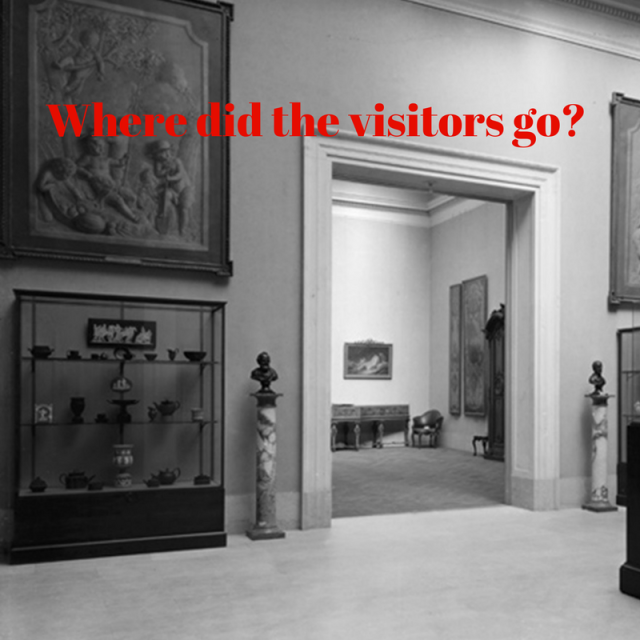
Museum visitorship is down. You don’t have to believe me. The NEA, the Art Newspaper, and the Guardian are reputable sources who say just this. Colleen Dillenschneider, wunderkind audience lady, last year wrote extensively about audience declines. The number of people is tied to the amount of money going into museum operating accounts, both through direct means, like ticket sales, and indirect ones, like grant funds earned based on annual attendance. Without money, museums can’t operate. Nonprofit still need some profit to run, of course.
On a bigger level, the decrease in visitorship might be a signal of the declining importance of museums in the public consciousness. This was something Holland Cotter alluded to in his article “How to Fix the Met: Connect Art to Life” for the New York Times. Cotter bemoans the declines in attendance in the Renaissance galleries, once a veritable melee of art-lovers. In short, Cotter’s feeling is that, despite the best efforts of the education department and the cosmetic improvements to the gallery, the museum is no longer relevant to patrons. To state it more plainly, since there are no visitors, it means people don’t care anymore.
Now, let’s step away from the Met’s and the attendance problems of the sector. Think about your recent week. Did you at any point look your social media feed to find that you were meant to go to an event this evening? Did you go? Or did you feign illness only to return home to stream a full season of Midsommer Murders? I don’t say this to out you as a social misanthrope (not that there is anything wrong with that). I point out that our society has changed.
Shared experiences are not always sited in communal space. Instead, we are often sharing experiences from the comfort of our homes. Instagram, snapchat, blogging…you can find shared spaces and communities in many non-physical spaces.
So, back to those museum visitors, they might not be hanging out in the Renaissance galleries of the Met. But, that doesn’t mean that they aren’t engaging. The MetMuseum’s twitter has 2.6 million followers, as of today. I love the Met’s Renaissance collection (the Merode altarpiece is why I am in this career), but I would be amazed if there were 2.6 million folks milling in those spaces on any given day back in the good days of museums.
People are staying home. They are not necessarily leaving the institutions they used to visit; they are visiting them in other ways. They are watching ballgames at home. As my mother says, ballgames at home can replay all the good angles of the strike (it was a ball), and you don’t have to deal with drunk people. They are playing movies on their tablets. And, they are accessing museum collections on Instagram.
So, in many ways, if the museums want to connect to people, first they need to realize it might not totally matter where all the visitors went. They, like you, museum professional, are at home with a computer, tablet, and phone all accessing information and ideas from sources they trust and enjoy.
Second, museums might reach across the leisure sector to see what sorts of things draw people to other things. As a Clevelander, I can tell you that being part of it still brings people out. The Cavs playoffs filled downtown and the parade was a juggernaut worthy of that word. But, those same people spent weeks being Cavs fan from the comfort of their home (tickets aren’t easy to get, man). In other words, people will come but only sometimes. How are other kinds of leisure institutions are doing it? What are their measures of success? When are they okay with people accessing them from home? Let’s look around and benchmark folks.
The visitors might not come back to the physical galleries every time. They might come for a blockbuster. But, that doesn’t mean that they have a more shallow connection to the institution. It might mean they are connecting differently.